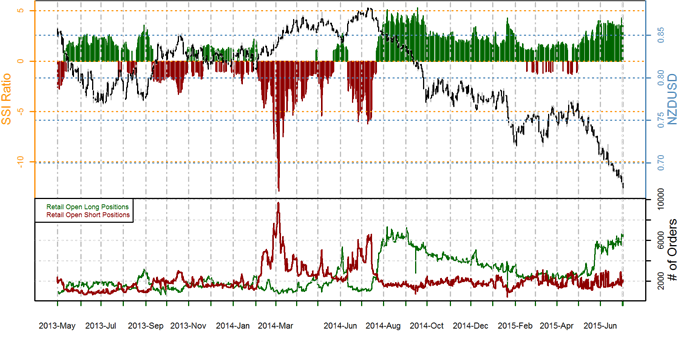
Receive the Weekly Speculative Sentiment Index report via PDF via David’s e-mail distribution list.
NZDUSD - The ratio of long to short positions in the NZDUSD stands at 3.03 as 75% of traders are long. Yesterday the ratio was 3.31; 77% of open positions were long. Long positions are 1.9% lower than yesterday and 13.7% above levels seen last week. Short positions are 7.0% higher than yesterday and 0.2% below levels seen last week. Open interest is 0.2% higher than yesterday and 10.2% above its monthly average. We use our SSI as a contrarian indicator to price action, and the fact that the majority of traders are long gives signal that the NZDUSD may continue lower. The trading crowd has grown less net-long from yesterday but further long since last week. We maintain our contrarian bias towards selling the New Zealand Dollar.
See next currency section: GBPJPY - British Pound Expected to Continue Higher versus Yen
--- Written by David Rodriguez, Quantitative Strategist for DailyFX.com
To receive the Speculative Sentiment Index and other reports from this author via e-mail, sign up for his distribution list via this link.
Contact David via
Twitter at http://www.twitter.com/DRodriguezFX
Facebook at http://www.Facebook.com/DRodriguezFX







